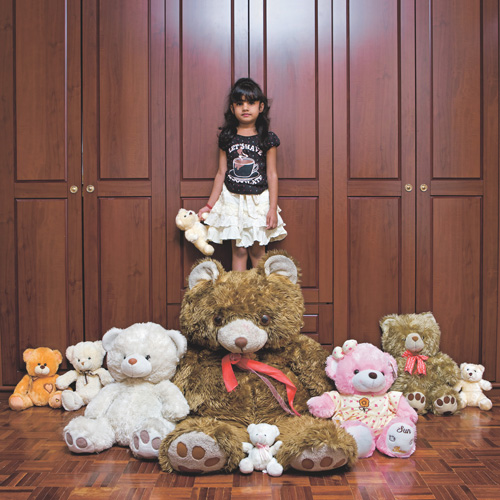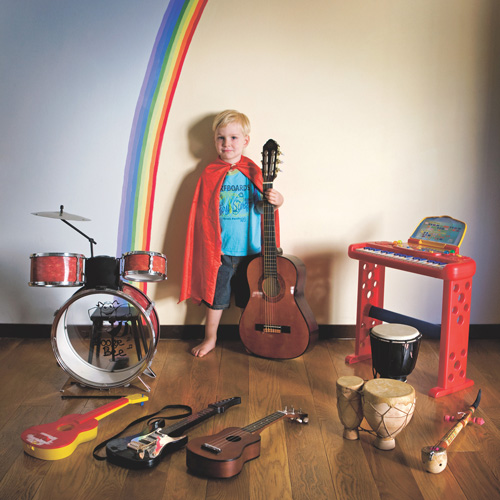Toy Stories: Photos of Children & Their Favorite Things
A visual catalog of the culturally-conditioned imagination.
 “Children help us to mediate between the ideal and the real,” MoMA curator Juliet Kinchin wrote in her fantastic design history of childhood. Largely responsible for this singular capacity are children’sremarkably metaphor-ready mindswhich transform toys into triggers for imaginative play, imbuing those seemingly simple plastic artifacts and synthetic-furred beings with life and meaning — a hallmark of childhood that cuts across cultural differences, geographies, and socioeconomic status. That’s precisely what photojournalistGabriele Galimberti explores in Toy Stories: Photos of Children from Around the World and Their Favorite Things (public library) — a visual record of his two-and-a-half-year-long quest to document what boys and girls in 58 countries, from India to Iceland to China to Malawi, consider their most prized earthly possessions.
“Children help us to mediate between the ideal and the real,” MoMA curator Juliet Kinchin wrote in her fantastic design history of childhood. Largely responsible for this singular capacity are children’sremarkably metaphor-ready mindswhich transform toys into triggers for imaginative play, imbuing those seemingly simple plastic artifacts and synthetic-furred beings with life and meaning — a hallmark of childhood that cuts across cultural differences, geographies, and socioeconomic status. That’s precisely what photojournalistGabriele Galimberti explores in Toy Stories: Photos of Children from Around the World and Their Favorite Things (public library) — a visual record of his two-and-a-half-year-long quest to document what boys and girls in 58 countries, from India to Iceland to China to Malawi, consider their most prized earthly possessions.
For each photograph he took, Galimberti spent the entire day with the families. In many cases, what the children did with their toys reflected the needs and realities of their culture. For instance, when the kids in a poor village in Zambia with no electricity, running water, or toy shop found a box of sunglasses that had fallen out of a truck, not only did the plastic eyewear immediately become their favorite — their only — toys, but they also quickly came to play “market,” “buying” and “selling” the prized toys to each other.
Henry, 5 (Berkeley, California)
Maudy, 3 (Kalulushi, Zambia)
Somewhere between Peter Maisel’s Material World series, James Mollison’s poignant photographs of where children sleep, and Rania Matar’s portraits of teenage girls through their bedroom interiors, the series touches on something beyond the sheer visual curiosity of this global atlas of childhood. What emerges is a poignant living testament to the nature-and-nurture model of human nature: The children’s choices, far from pure personal preference, are deeply rooted in social norms and gender conditioning, as in the dominant pink color in many of the girls’ possessions (the subject of another photographer’s fascinating project) or the extensive car collections of little boys, economic reality, as a Kenyan boy’s single stuffed monkey, and cultural climate and priorities, as in a Swiss boy’s minimalist, design-minded LEGO blocks or the toy-firearm artillery of a little boy in the Ukraine.
Julia, 3 (Tirana, Albania)
Abel, 4 (Nopaltepec, Mexico)
Talia, 5 (Timimoun, Algeria)
Pavel, 5 (Kiev, Ukraine)
Reania, 3 (Kuala Lampur, Malaysia)
Shotaro, 5 (Tokyo, Japan)
Chiwa, 4 (Mchinji, Malawi)
Enea, 3 (Boulder, Colorado)
Complement Toy Stories with an equally fascinating look at children’sclassrooms, bedrooms, and family possessions, then revisit this pause-givingvisual study of gender and color.
Maria Popova is a cultural curator and curious mind at large, who also writes for Wired UK, The Atlantic and Design Observer, and is the founder and editor in chief of Brain Pickings (which offers a free weekly newsletter). ​










